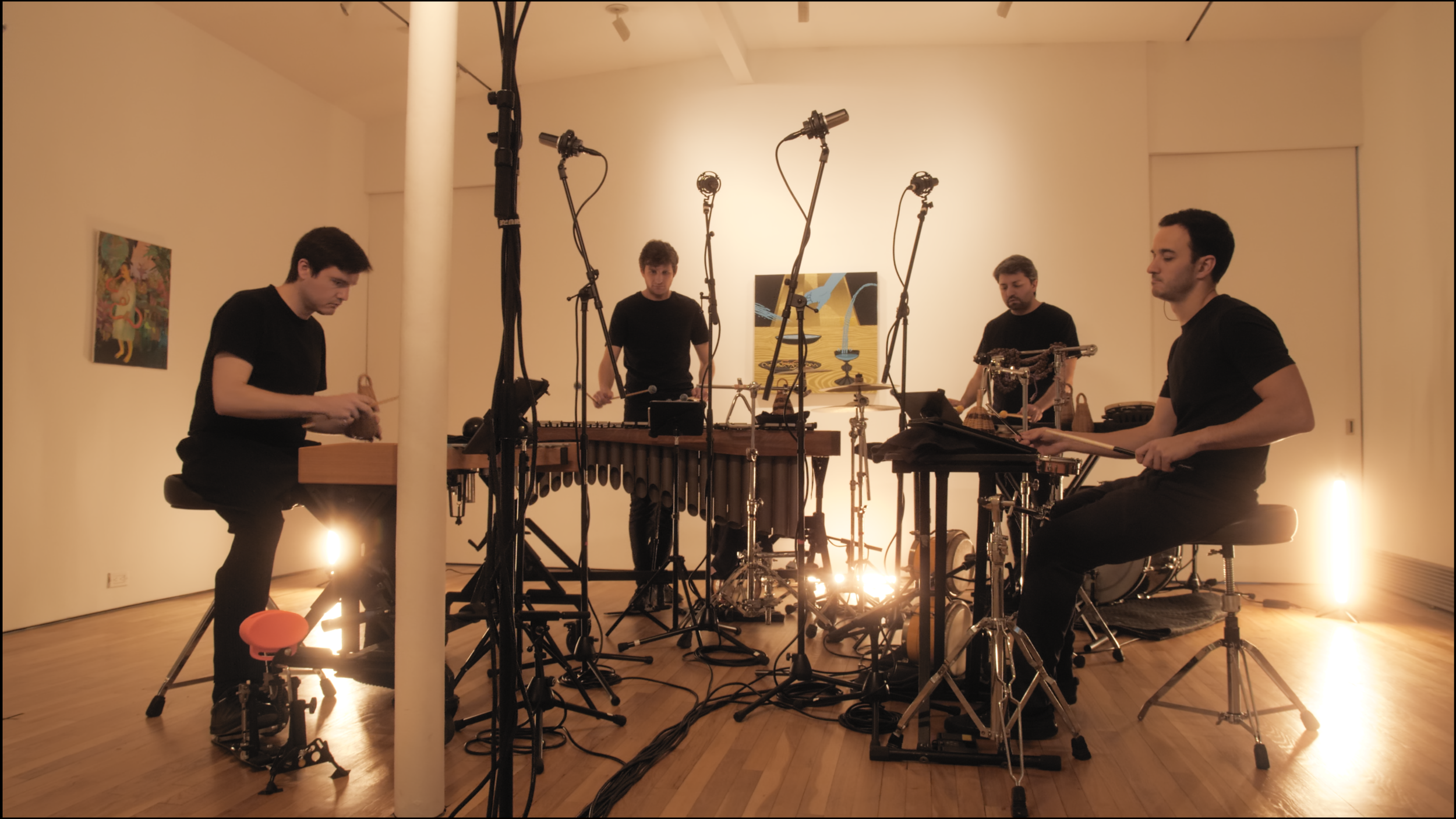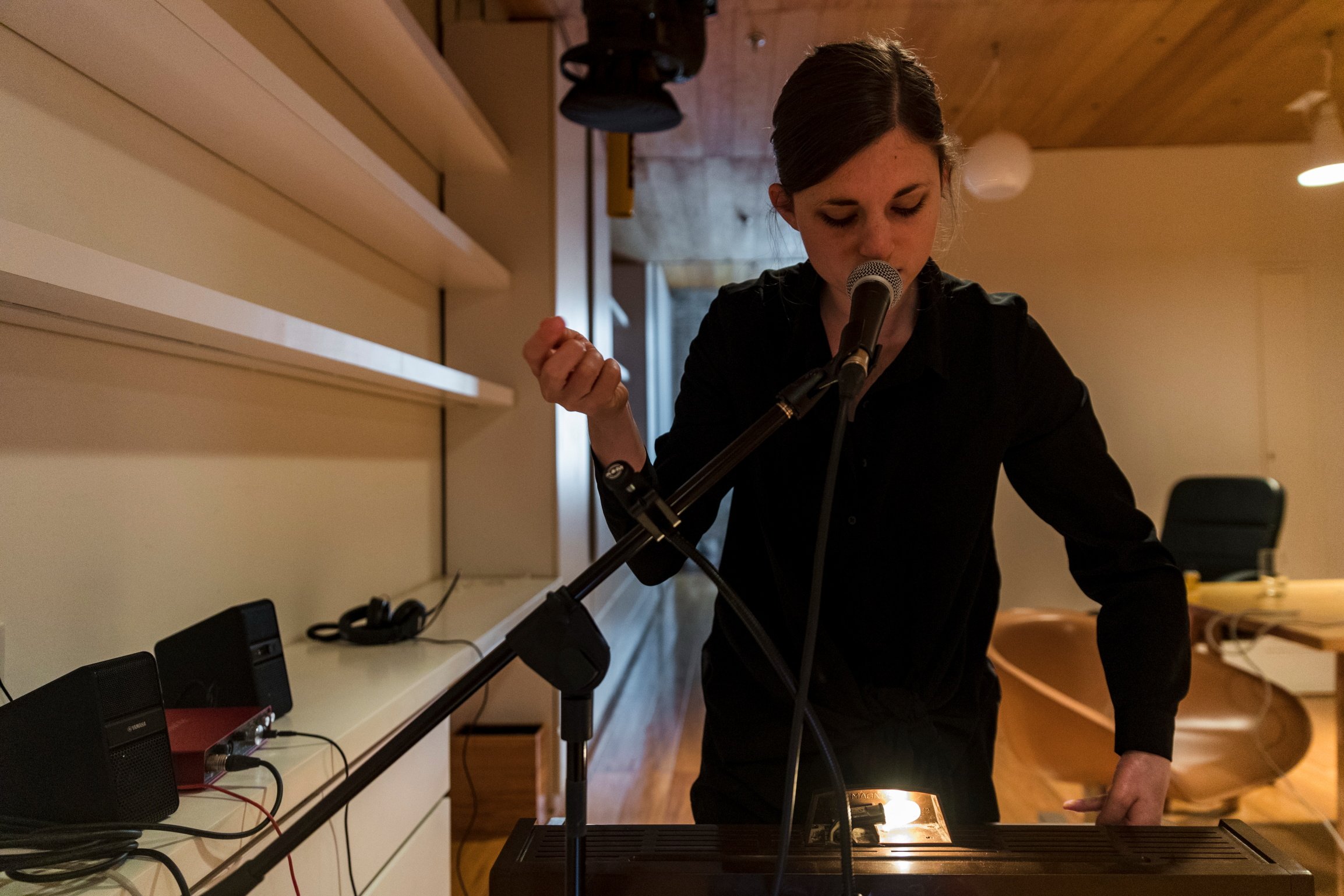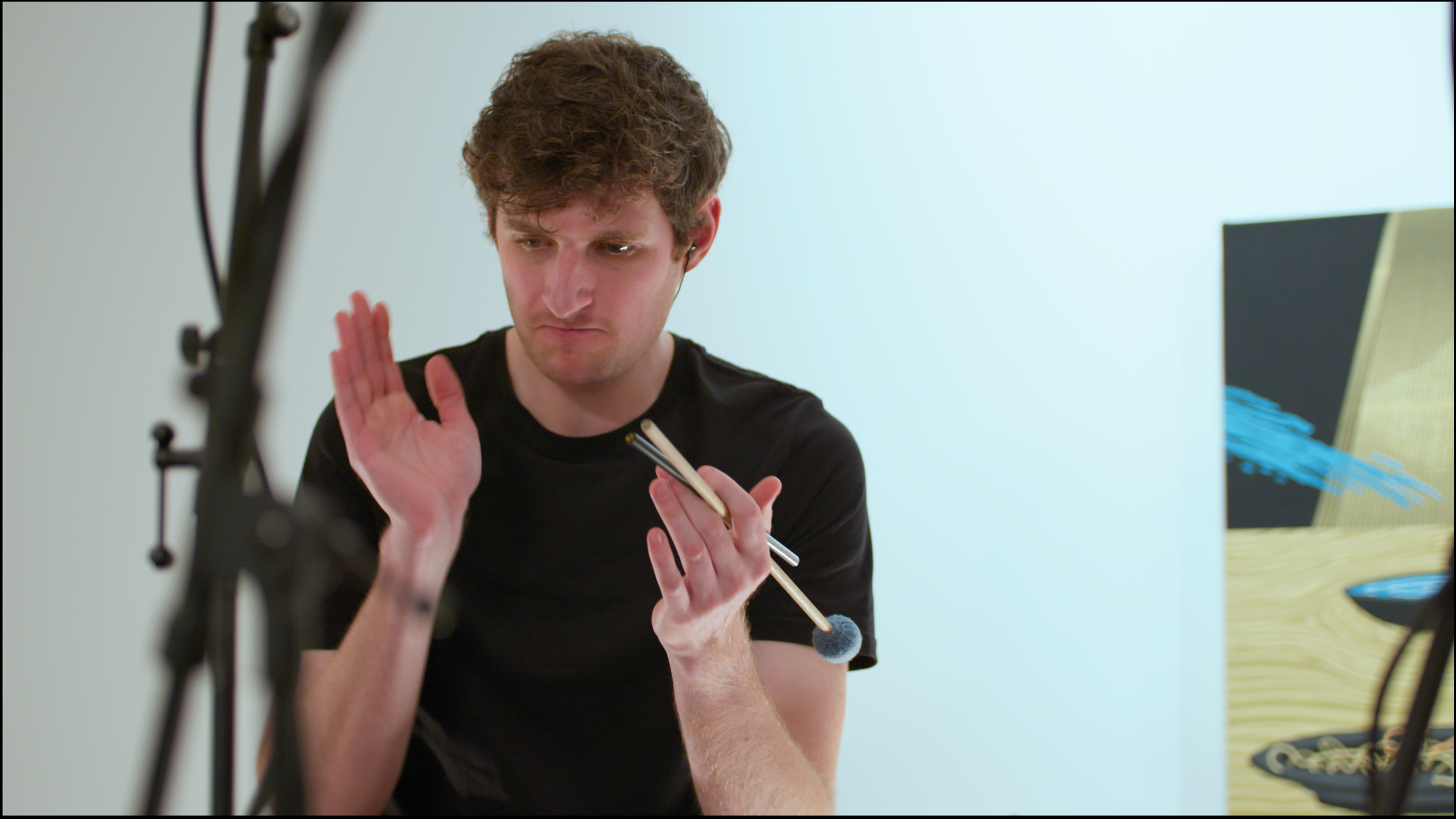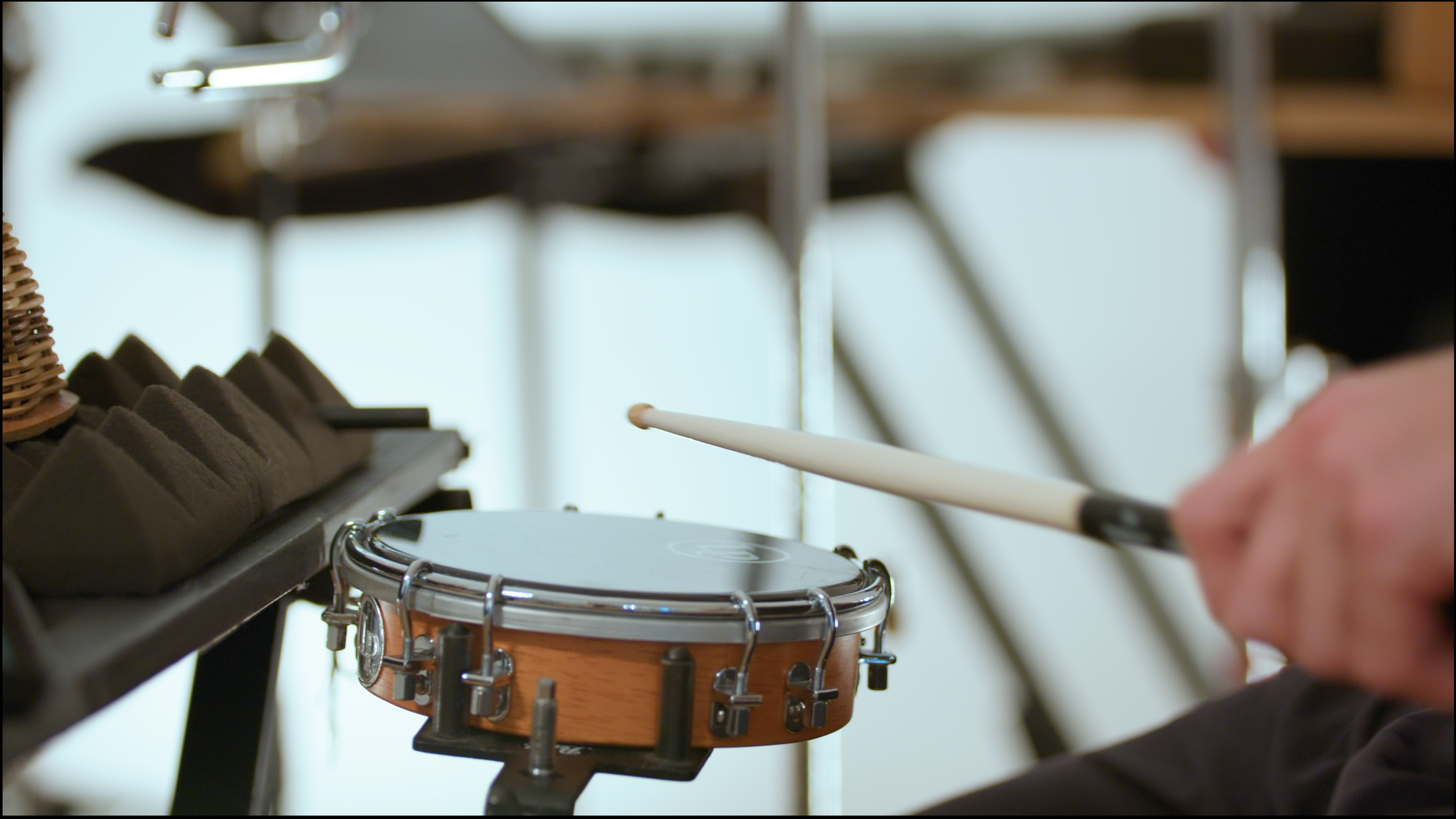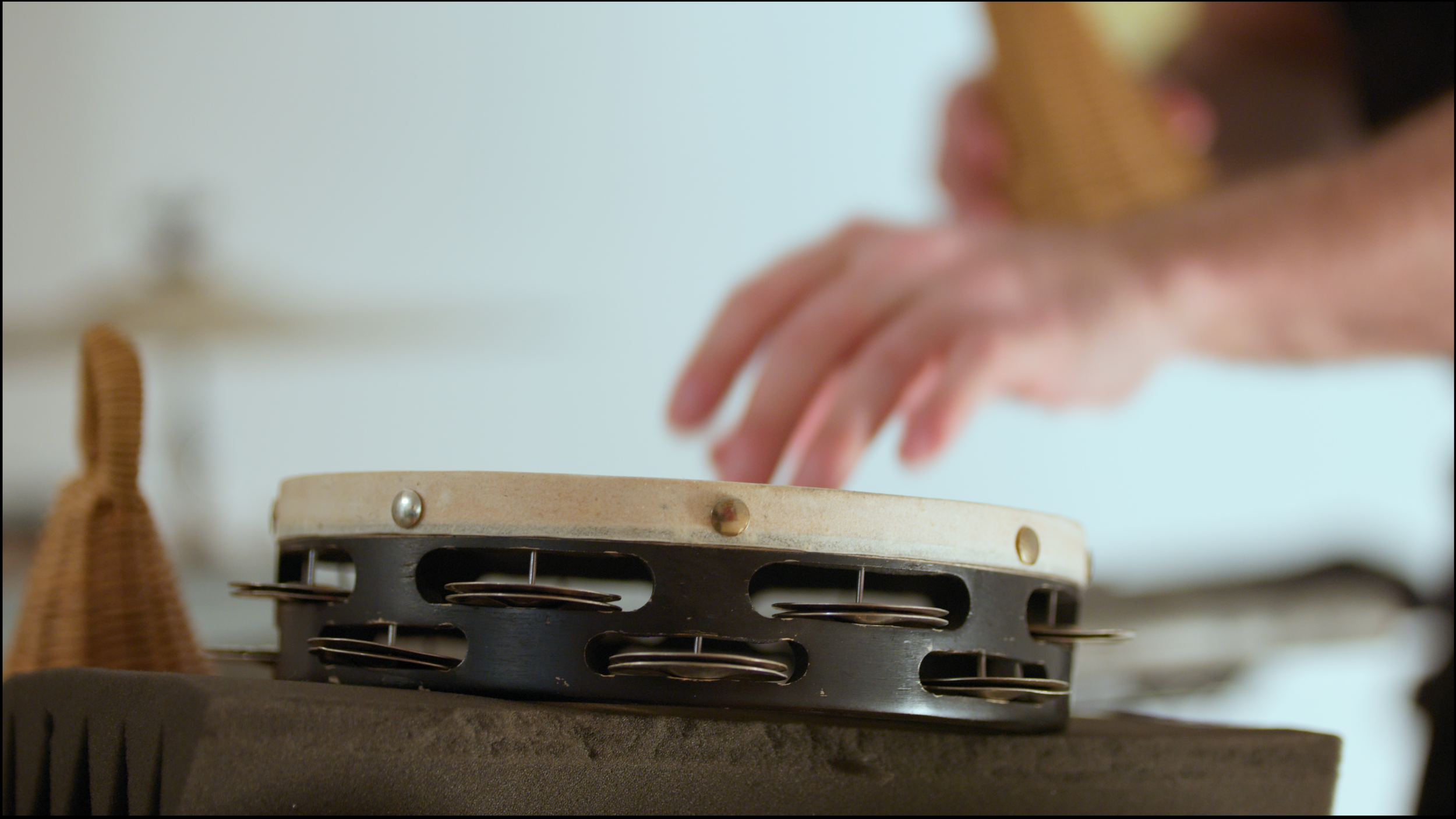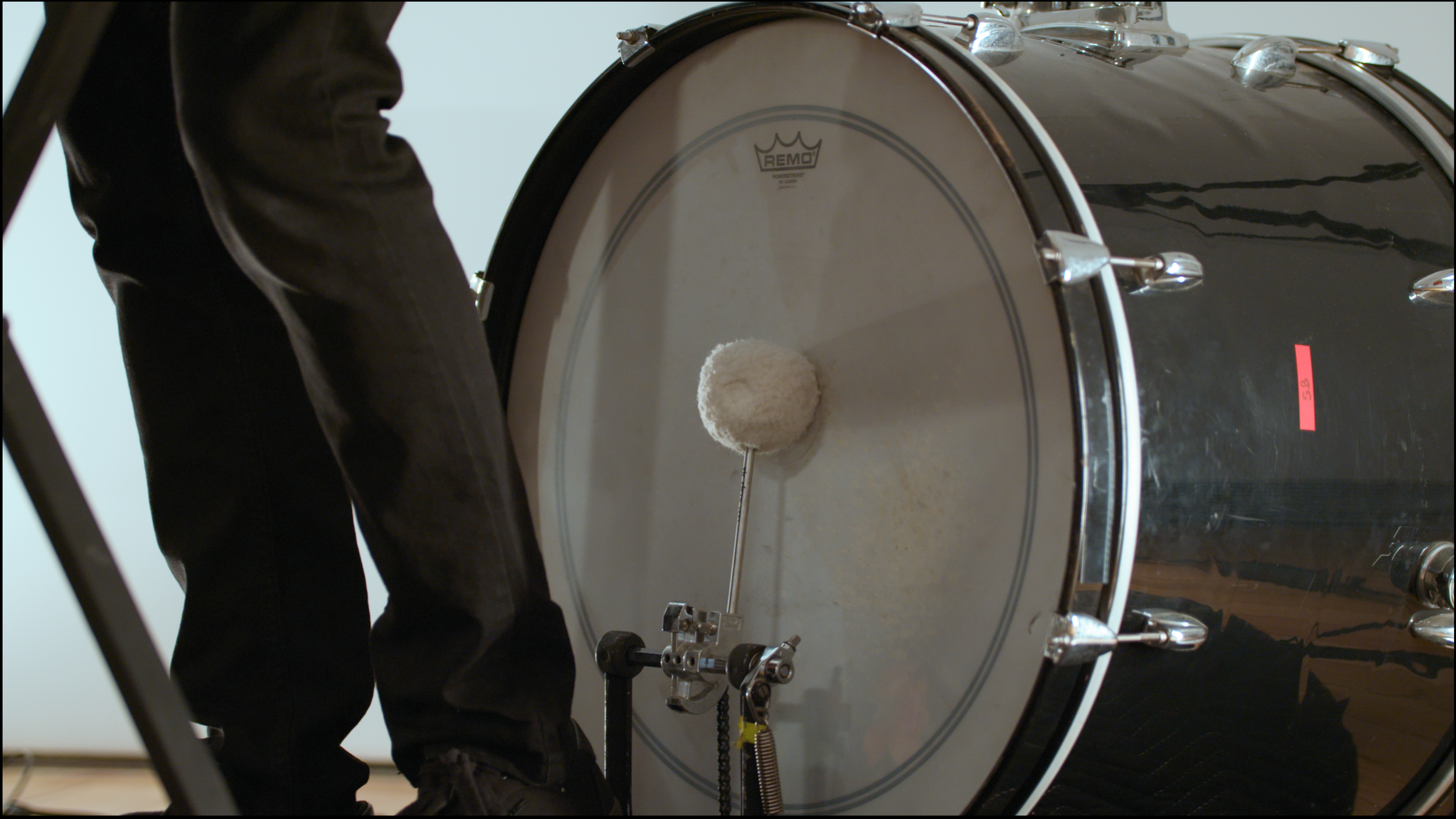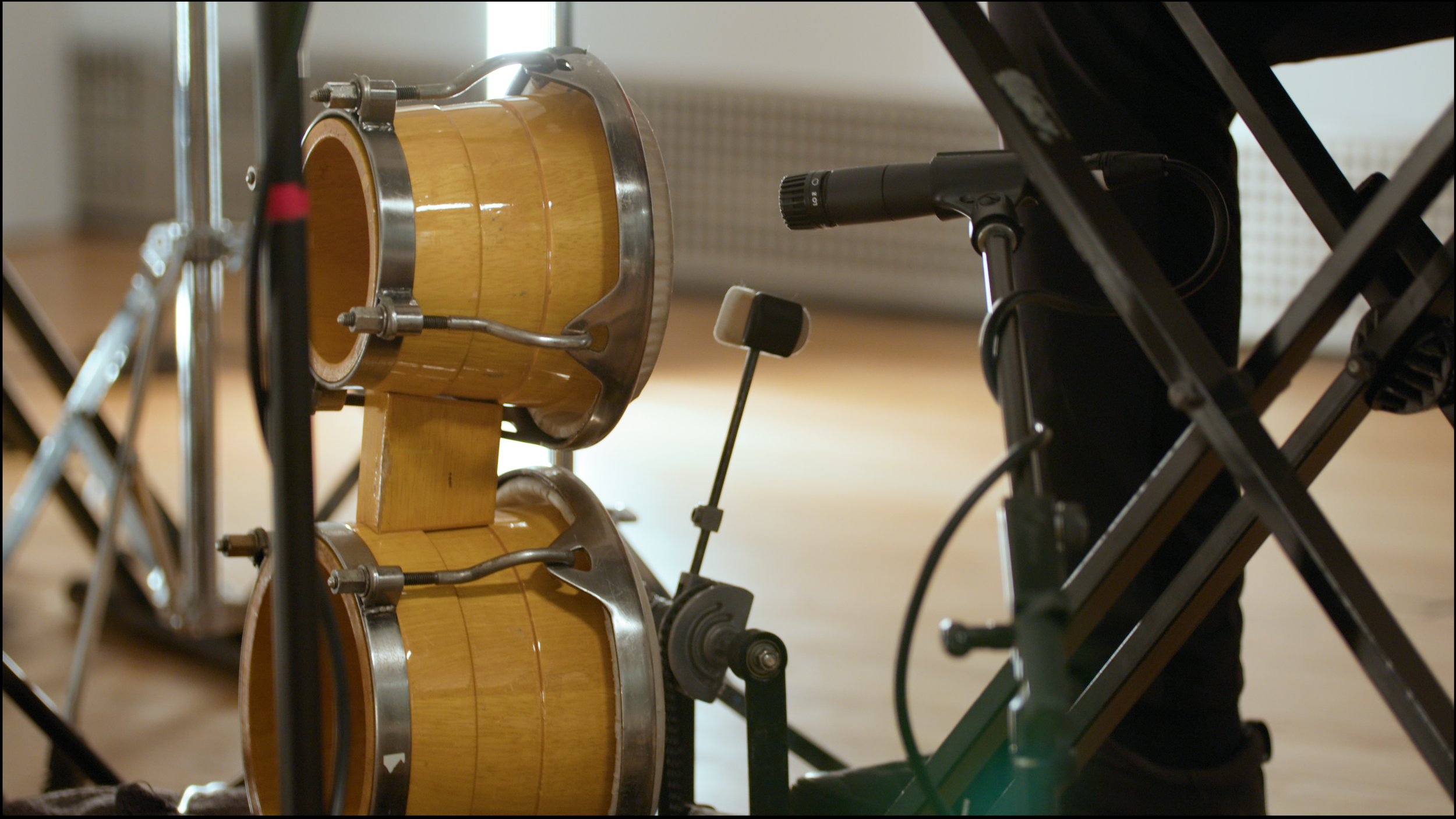FEATURED STORY
May 31, 2024
Molly Joyce on the Subjectivity of Sound
Metropolis recently launched Loud and Soft, a new web presentation with Sandbox Percussion. Go behind-the-scenes with composer Molly Joyce as she discusses the production and its role in the conversation about accessibility in music.
Metropolis Ensemble recently launched Loud and Soft, a multi-modal interactive web presentation of composer Molly Joyce's new work for percussion quartet featuring Sandbox Percussion.
This unique presentation includes a combination of three video experiences and individual audio clips. These formats are accompanied by related sound descriptions created by Stefan Sunandan Honisch and Andy Slater to describe the aural content for artistic and accessibility purposes. The project explores the transitions from non-pitched to pitched instruments and details the subjectivity of sound.
A standalone single of Loud and Soft was also released on all platforms.
Over the course of ten minutes, Loud and Soft showcases the effects of the multifaceted timbral transitions and colors as they happen between the various percussion instruments: when it switches, breaks down, and leads to new possibilities.
To bring this idea to the foreground, Joyce commissioned sound descriptions in 2021 to synchronously accompany the composition. One set of text by Stefan Sunandan Honisch, a musicologist, uses more technical music theory explanations to describe the music. The other set of text by Andy Slater, a media artist, employs more imaginative, poetic wording to reflect the emotional experience of the music.
At the core of Loud and Soft is Joyce’s focus on disability as a creative source. She has an impaired left hand from a car accident, and has brought this mission to explore disability in her compositions, performances, collaborations, and community engagement.
Metropolis talked with Molly Joyce about Loud and Soft in the interview below. Note: this has been edited for length and clarity.
How did this project come together?
Back in 2020, Sandbox Percussion and I were discussing that I would write a new piece for them. We applied for funding which took a couple of years to secure. And I had the first opportunity to write an open instrumentation version of it through their summer workshop with New York University.
Then I had the idea of bringing sound describers on board, since accessibility has been a consistent theme in my music. I had done a lot of work with Andy on sound description before with my solo performances. I always love how his sound descriptions are super poetic and imaginative, so he was an obvious choice to collaborate with again on this project.
I’ve always had this inclination of, what if two different people were describing it to show the subjectivity of sound. Stefan is more of an academic and based on his professional background would have a pretty different take on the music. Having his music theory take on the piece versus the imaginative take just makes sense.
What drew you to a focus on the subjectivity of sound?
There’s been lots of work done in the accessibility world for image descriptions, for example, providing “alt text” for images on Instagram and webpages. And I think a lot of people, including myself, are hesitant to start doing that work because visual material is inherently subjective. What you highlight (or not) and what you choose to describe and identify; there’s so much wound up in that.
There’s a really great series called Alt Text is Poetry by these two disabled artists, Finnegan Shannon and Bojana Coklyat. I created workshop materials for them as a teacher. They aim to free up your hesitations around describing an image perfectly. So that was in the back of my mind as well related to the subjectivity of descriptions. Sounds are even further in that realm. They can be so abstract, especially a piece like this one, with percussion instruments and no lyrical content.
Sound descriptions depict aural content for both accessibility and artistic purposes, and are an important aspect of my practice as a disabled artist. I have included them in past artistic works, from dance to video to music, and written by myself and with collegial disabled artists.
I find it fascinating how sound descriptions underscore the subjectivity of sound while opening up accessibility practices to audiences that may not be familiar with them. I sought to highlight various interpretations of sound available for this work. Instead of only having one sound description, Stefan and Andy wrote descriptions that line up with moments in the piece they find important. These descriptions ultimately highlight the inherent subjectivity of sound.
What’s your experience working at the intersection between sound and poetry?
I love it. I’ve worked more in direct ways, setting poetry to music. But I love this reverse way, providing my music and seeing what someone comes up with. It’s very freeing and nice to hand over that part of the process to someone else.
I like to collaborate where everyone clearly has their role, and works in response to each other. For example, Sandbox played the music but also gave me ideas on different instruments to include. And I felt confident giving the writers 100% creative freedom and not many restrictions so they could fully respond to the music.
How did the idea for different videos come together?
When we started planning the video, Sandbox and Continuous Motion had the idea to play between the two different views (a walk-through experience and a close-up experience). I’m drawn to video works that have more of a narrative in the editing, instead of alternating between the different views. The fact that the camera can get up close visually to the instruments that you can rarely do in a concert setting is satisfying.
Exploring accessibility is limitless. There’s so many different routes you can take. It can be a live performance, a video, a webpage, an in-person installation. That always excites me about accessibility: not prioritizing one medium, or way of taking in a work, or one discipline over another. They all have inherent value.
Walk us through the filming and recording day.
I was very grateful for Metropolis offering the space at One Rivington (Candice Madey Gallery) in January 2023 to film with artwork in the background. The audio and video were recorded at the same time. The team from Continuous Motion did a few run-throughs, filming the wider shots, the close-up ones, and then doing some takes on specific percussion instruments.
That piece was worked on over several years, so it was nice to have it documented with the Sandbox guys. I felt excited to see what would become of the videos. Then Terry and Victor (from Sandbox Percussion) and I would listen through the different audio takes in case anything was slightly off. But obviously they’re an amazing group and it sounded great!
The final version mixed together different sections of different takes. Most of my recordings, or at least the ones I produce on my own, use that method. Loud and Soft is a very rhythmic, 10-minute piece, and when you perform it straight through, you might not keep the consistent tempo throughout. So that’s why it’s a good idea to slice it together. Sandbox even recorded it with a click track to keep everything sounding very tight.
And from there it went to Mike Tierney for mastering.
Yes. I usually can’t hear much of a difference, to be honest, but mastering makes it overall louder and more consistent volume across different devices so it sounds better for everyone. We wanted the recording to get a more intimate feeling that matched the video feel in a way; not like you’re sitting in a big concert hall. These instruments were only a few feet away, especially some of the small instruments. But I definitely prefer that compared to a more distant, hall-like quality.
How did the idea for the web presentation come together?
Originally, Terry and I were thinking we wanted the different versions of the video and sound descriptions to be on YouTube. But when we mentioned this to Andrew at Metropolis, he pushed back and said perhaps this could be so much more than that. We didn’t know we’d get as much support as we did from Metropolis in a good way. I’ve always been appreciative of the team’s support over the years, and with Loud and Soft there was an opportunity to help more people understand the project with a complete webpage.
I thought we needed an explanation of this project, because when I’ve done videos with sound descriptions before, I often see comments on YouTube, like “Oh I didn’t know this piece had lyrics.” Which is fine, but not accurate, so it’s helpful to explain it a little more. I also knew it was important to post on YouTube because Sandbox Percussion has a big following and it allows more people to experience it, which ties into the overall accessibility of the project.
A project like this is hard to explain in a 40-character caption. And at the same time, not everyone is going to read the detailed description. It’s important to me to share it as widely as possible. So that’s why it’s important to have it on mediums like YouTube and social media that actually have more built-in accessibility than most websites, even if you can’t have a deep conversation or a detailed explanation about the work.
Do you still see flaws in the accessibility of the internet for your disabled colleagues?
I personally don’t use any assistive technology, but one of the biggest flaws I see is a so-called “accessibility widget” on websites, which you might recognize because they appear like a blue figure with arms and legs spread outward. If you click, it’ll change the website to dark or high contrast or larger font size. I used to think, “This is great, I just inject a few lines of code onto a site and it will add all these features.” But then upon further research and talking to colleagues, I’ve realized that these “plugins” are actually more harmful. For example they can interfere with someone’s screen reader.
In my doctoral studies, I’ve been fascinated with these issues, because often they are tied up with capitalism and legal matters when these widgets promise to protect you from lawsuits, but in reality it makes the assistive experience worse. One friend pointed out that when the internet first started, webpages were actually very accessible because they were very basic and clear. And now websites are extravagant and maximalist with ads everywhere. It’s obviously gotten much more complicated for screen readers to work.
For Loud and Soft, Metropolis really took the time and care and effort to make the web presentation look and feel as effective as possible and not rush the process. This project couldn’t have come to fruition without that support!
Plus there’s the streaming version of the work that was just released.
Yeah that was Andrew’s idea to have another outlet, beyond YouTube, to reach a different audience. Metropolis has been getting more into recording so it made sense to release this track and get it out there.
As a listening experience, the work starts in timbral unity for the four percussion parts and eventually becomes a diversified texture. I sought to explore the effects of timbral transitions occurring among various instrumental bodies, when it switches, breaks down, and leads to new possibilities.
Any final thoughts?
This project was a dream come true. I have longed to incorporate sound descriptions by two different writers in order to highlight the inherent subjectivity of sound, and am grateful to Sandbox Percussion, Metropolis Ensemble, and New Music USA for their support in this journey.

